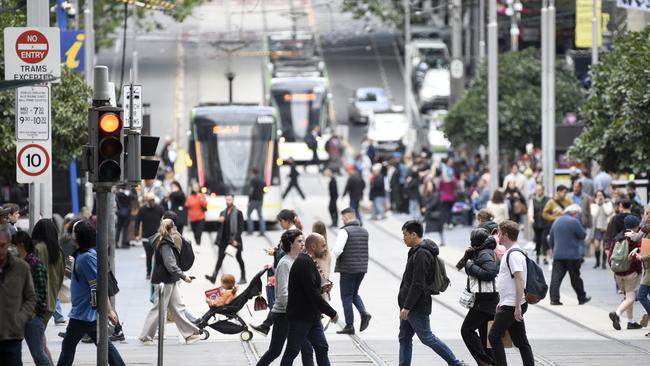Big change coming for Aussie workforce with major overhaul to migration
A landmark review has recommended a major overhaul of the migration system after it found there were systematic flaws.

Work
Don't miss out on the headlines from Work. Followed categories will be added to My News.
The number of overseas workers coming to Australia are set to shrink under sweeping reforms to the nation’s migration framework.
Home Affairs Minister Clare O’Neil released the draft outline of a new migration strategy, which would raise the minimum wage threshold for temporary workers and open up a pathway to permanent residency.
But the government isn’t eyeing off setting a new migration target, opting to move away from a yearly cap to a long-term outlook.
“Quantity is not the really important question here,” she said.
“Coming out of Covid we are playing catch-up and have serious labour shortages and it is probably inevitable that we will run a slightly larger migration program over time.
“My desire is to see that program tightened and potentially smaller into the medium term.”

Consultation with the states and territory governments will begin on Friday, with Prime Minister Anthony Albanese raising the issue with premiers and chief ministers at national cabinet in Brisbane.
On Thursday, a major review into the migration framework recommended sweeping changes to overhaul the system to better attract the most highly skilled people and simplify the “slow and crazily complex” visa system.
The review by former public service chief Martin Parkinson and a panel of migration experts recommended the temporary skilled migration income threshold (TSMIT), which has been frozen at 2013 levels, be increased.
Speaking at the National Press Club, Ms O’Neil announced a “substantial” TSMIT increase from $53,900 to $70,000.
She said the low threshold, which will be grandfathered out, had paved the way for worker exploitation.
“We need to reform the policy settings that drive exploitation. This means exploring ways to give migrants more flexibility to move employers and enforce their workplace rights,” she said.
Visa categories will be streamlined, and for the first time the government will establish three tiers for migrant workers – high skills, middle skills, and a stream that covers low-wage industries such as the care economy.

An income threshold for the highest tier has not been set but the review recommended it not be lower than the average full-time salary of $98,000.
Under the reforms, overseas workers coming to Australia will no longer be bound by their employers, and labour market testing – which requires a job to be advertised locally – will be scrapped.
The “point system” used to select permanent skilled migrants to settle in Australia will be overhauled to prioritise productivity, participation and the ageing population challenges.
Ms O’Neil said the skilled occupation lists were “outdated” and responsibility for identifying labour shortages would shift from the minister to a body such as Jobs and Skills Australia.
“Part of the problem in the system is that because the minister essentially does get to decide what a shortfall looks like, you end up with a system where one person has discretionary decision-making power,” she said.
“In my view too much control without having the information.”
Speaking ahead of the report’s release, Dr Parkinson said Australia had been essentially “flying blind”, with no evidence to back up the migration system‘s success.
“We just don’t know how effective the system is,” he said. “The system does not allow us to identify people who are most likely to be successful and beneficial for Australia.”
Since 2007, the number of temporary migrants in Australia has soared from around one million to 1.8 million. Meanwhile, net skilled permanent migration has stayed around 30,000 a year for the past two decades.
The government will release its full migration strategy later in the year following consultation with unions, business and other stakeholders.
Originally published as Big change coming for Aussie workforce with major overhaul to migration


